Too not evil for this but yesThough Hispania would fit this TL better
You are using an out of date browser. It may not display this or other websites correctly.
You should upgrade or use an alternative browser.
You should upgrade or use an alternative browser.
Un Dios, Un Imperio, Un Rey | Alternate TL.
- Thread starter Paladín Wulfen
- Start date
Firecrackers warIn this TL for the provincials, every ridiculous fight between Montevideo and Buenos Aires must be a complete spectacle.
Just read all the current chapters of this series, like the new series. Cool that Iberia is still controlled by the Habsburgs (will we still see the intermarriage like OTL?), they're conquering the world and nobody can stop them. How is France doing? Nice that Iberia conquered Japan, a completely Catholic Japan will have interesting relations with it's neighbors. Hope to see a map of the Iberian Empire. Keep up the good work.
In the third chapter of the following incoming, we will see what will happen to France. Including Anglo-Saxon and Frankish colonization of America.Just read all the current chapters of this series, like the new series. Cool that Iberia is still controlled by the Habsburgs (will we still see the intermarriage like OTL?), they're conquering the world and nobody can stop them. How is France doing? Nice that Iberia conquered Japan, a completely Catholic Japan will have interesting relations with it's neighbors. Hope to see a map of the Iberian Empire. Keep up the good work.
If the invasion of England ends up happening, that means that the English colonization is screwed. Even if the colonization starts before the invasion, it only causes any English colonies to end up destroyed or conquered. That leaves France, which isn't exactly a genius when it comes to colonizing.
La Armada Invencible
Fuck off... BOMB AWAYIf the invasion of England ends up happening, that means that the English colonization is screwed. Even if the colonization starts before the invasion, it only causes any English colonies to end up destroyed or conquered. That leaves France, which isn't exactly a genius when it comes to colonizing.
«Nos embarcamos en una cruzada por la Cristiandad, vamos a purgar esa isla hogar de piratas y brujas que han acosado nuestras costas desde hace decadas. Es hora de demostrarle a la Reina Pirata y sus Sucios Piratas, como es luchar de frente».
«We embark on a crusade for Christianity, we are going to purge that island home of pirates and witches that have plagued our shores for decades. It's time to show the Pirate Queen and her Dirty Pirates, what it's like to fight head-on».
— Marquis of Santa Cruz, Álvaro de Bazán
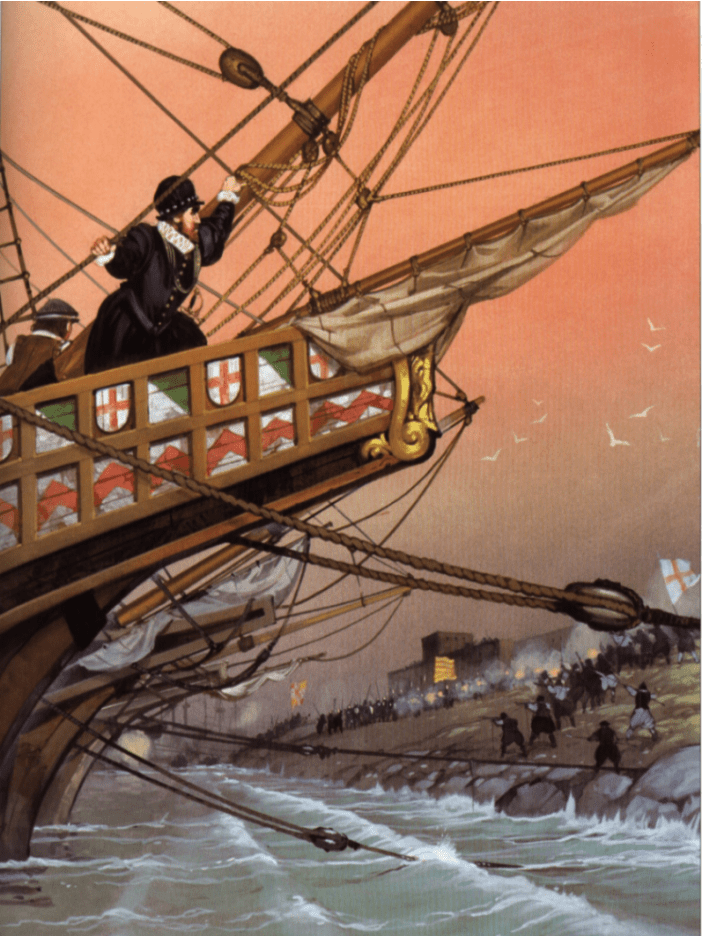
«We embark on a crusade for Christianity, we are going to purge that island home of pirates and witches that have plagued our shores for decades. It's time to show the Pirate Queen and her Dirty Pirates, what it's like to fight head-on».
— Marquis of Santa Cruz, Álvaro de Bazán

With the ascension of Felipe I of Spain to the Portuguese throne, the Spanish Empire extended almost all over the world. This made Queen Elizabeth I of England see national security threatened, which led her to support the constant expeditions of English corsairs such as those of Sir Francis Drake, nicknamed the Dragon, against the Spanish territories in the Indies and against the treasure fleet. that loaded with wealth fed the finances of the metropolis. However, although Felipe expressed a strong claim to the English Queen, she washed her hands of it while the English economy was increasing thanks to the stolen money that entered England. Apart from the political and economic causes, there were also religious ones, since the disagreements between the two countries came from the times of Henry VIII of England. English Protestantism confronted Spanish Catholicism; Elizabeth I of England had been excommunicated by Pope Pius V in 1570, and Philip I of Spain had signed a treaty in 1584 with the Holy League of Paris (an armed political movement of a Catholic nature of French origin and led by Henry I of Guise). , 3rd Duke of Guise), in order to combat the Protestantism that plagued France. The pirate incursions were mostly carried out by Protestant crews that, although they were never great victories, they did represent a nuisance for Felipe and the development and traffic on the naval routes. War would break out when Sir Francis Drake, commanding a fleet of 21 ships and 2,000 men, undertook a campaign of attack and looting against the coasts of Spain and Portugal that included the burning of several villages on the west coast of Galicia and an attempt to assault the town of Vigo where he was rejected by the same population without exception of classes, sexes or ages, who came to the defense of their city, forcing the pirates to get on the boats, abandoning everything they had stolen, setting sail to head to the Canary Islands.
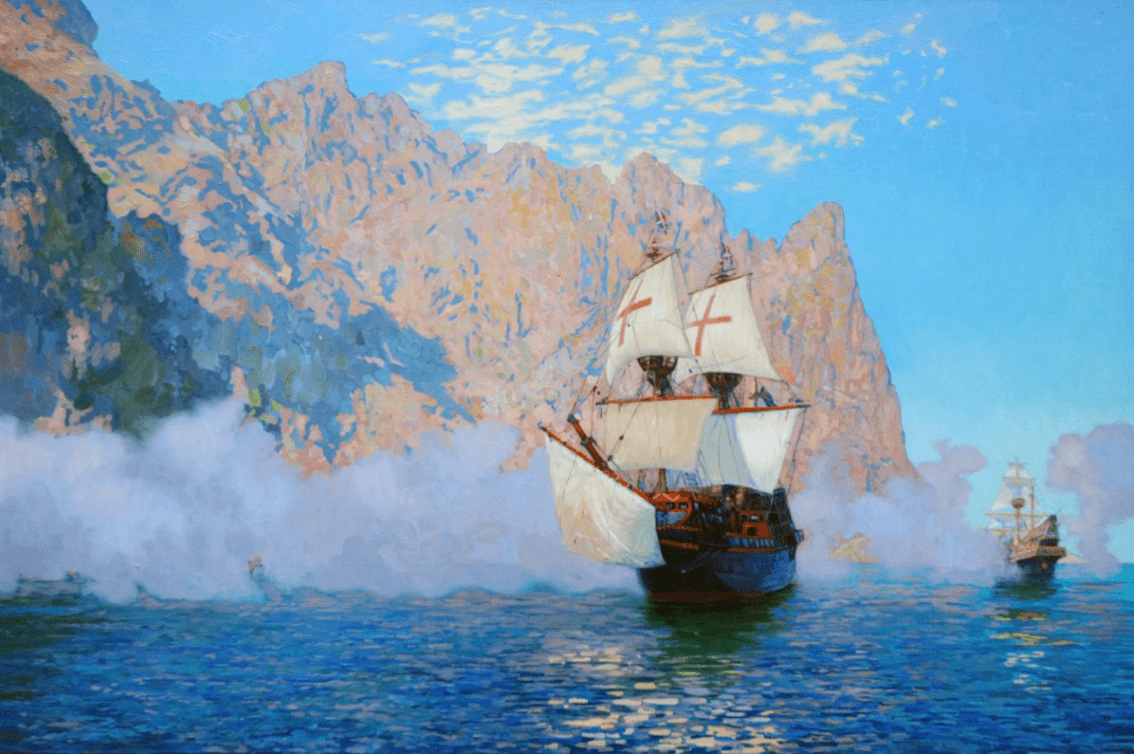
Later Francis Drake would end up crossing the Atlantic where on January 1, 1586 he would arrive at the island of Hispaniola, where he would order 1,200 men to disembark and take the city of Santo Domingo, where he would demand a ransom from the Spanish authorities for his return. A month later, after setting fire to part of the city and receiving a payment of 25,000 ducats, the attackers withdrew, once again setting out to sea. Drake then headed for Cartagena de Indias. On February 19, they penetrated through Bocagrande at night until they reached Punta del Judío while another group tried to enter through the Ánimas bay, but a chain of floating barrels blocked the way at the height of the Boquerón fort. Drake continued his way through the unprotected Bocagrande peninsula until he reached the defenses of Santo Domingo, met with great resistance, but still managed to take the city at dawn. The English would then negotiate with the authorities of Cartagena de Indias who had taken refuge in the neighboring town of Turbaco. To pressure a response in the negotiations, Drake began to burn at least 200 houses in Cartagena until the authorities paid what he asked for within the granted terms. And during this time, Drake found among the governor's papers, a warning letter about the arrival of the pirate Drake. Humiliated, the English asked to destroy the summit of the Cathedral under construction with a cannonball. Finally, before this destruction, the authorities of Cartagena de Indias paid the sum of 110,000 gold shields. Drake also took jewelry, the city's bells and artillery pieces from the city. On March 1, having suffered few casualties during clashes with the Spanish and indigenous people in Santo Domingo and Cartagena, but decimated by yellow fever, they set sail from Cartagena intending to return to England. However, in the middle of the journey they would attack the Spanish fortress of San Agustín, which would be looted and burned. The surprise would be when, at the height of Roanoke Island, he would save more than a hundred English settlers who, under the orders of Ralph Lane and faced with the difficulties of populating the area, decided to return to England after having settled there the previous year.
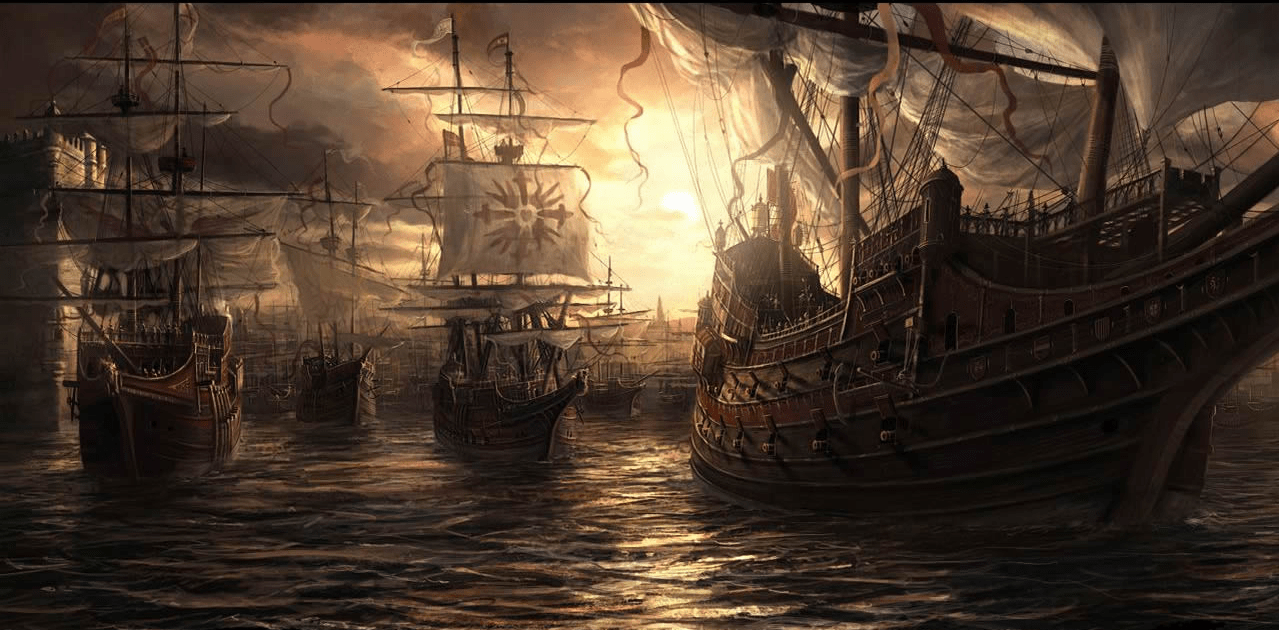
The discovery that Sir Francis Drake had attacked and plundered various Spanish towns amounted to a casus belli against England serving as an important Protestant stronghold. King Philip made use of a major espionage campaign that included the use of the oppressed Catholic community who were seen by the English Protestants as an undesirable minority. Elizabeth I's reign in religious matters could be described as "Either you are with us, or against us." instituting a religious quasi-terror given the establishment of the "Law to hold the subjects of the Majesty of the Queen in her obedience", passed in 1581. This law was intended to declare as traitors those who tried to reconcile someone or reconcile with "the Roman religion", or procure or publish any papal bull or writing on English soil. The celebration of the Catholic Mass was prohibited on pain of a fine of two hundred marks and imprisonment of one year for the celebrant, and a fine of one hundred marks and the same imprisonment for those who heard the Mass. This act would increase the penalty for failure to attend Anglican service to the sum of twenty pounds a month, or imprisonment until the fine was paid or until the offender went to the Protestant Church. An additional penalty of ten pounds a month was inflicted on anyone who supported a schoolmaster who did not attend Protestant service, while the schoolmaster himself was imprisoned for a year. These events were further motivated by Pope Pius V's 1570 bull, Regnans in Excelsis, which unleashed nationalist sentiments that equated Protestantism with loyalty to a very popular monarch and made Catholics "vulnerable to accusations of being traitors to the crown". This only facilitated the recruitment of spies for the king of Spain. The climax of Elizabeth's persecution of Catholics was reached in 1585, with the Act against Jesuits, Seminary priests, and similar disobedient persons. This statute, under which most English Catholic martyrs were executed, made it high treason for any Jesuit or seminary priest to be in England, and a felony for anyone to harbor or relieve them.
In view of the events that occurred, Felipe I would end up considering various plans to carry out the invasion, which were basically reduced to one proposed by the Marquis of Santa Cruz, Álvaro de Bazán, a marine expert, which was based on the creation of a large fleet under a single command, consisting of a fighting force and a transport convoy for the landing troops, thus forming a "well-unified expedition". The proposed plan was the formation of a Great Fleet that would serve as an escort for transports loaded with soldiers that would land in England under the command of the Duke of Parma Alejandro Farnese; leaving that of Santa Cruz in command of the naval forces that would attend to the defense and provisioning of the landing ships. The Great Navy was preparing to be configured as a large and very heterogeneous naval group, since it framed ships of different capacities such as those of the Atlantic and those of the Mediterranean. In 1586, Felipe II began to enlist and provide a strong navy, both with existing means, the construction of new ships and the seizure of other merchants; that are being carried out in Guipúzcoa, Vizcaya, Santander, Cádiz, Sanlúcar de Barrameda, etc. and whose ships frequently enter shipyards to be refitted to make them more efficient for naval warfare. During the following two years, two dozen galleons were launched: six in Santander, six in Bilbao, six in Portugal, two in Gibraltar and one in Vinaroz. All these ships were conceived and built following rigorous criteria of rationality, based on homogeneous types designed for specific tasks. The enlistment of ships from the Viceroyalties of Naples and Italy was even ordered. In the middle of this process, two events occurred that would mark the war: The execution of the Queen of Scotland and granddaughter of Henry VIII, Mary Stuart. In 1568, banished from Scotland, where she had abdicated in favor of her son, James IV, Mary Stuart took refuge at the court of her cousin Elizabeth I of England, who, at least outwardly, cared for her and I wanted to help her.
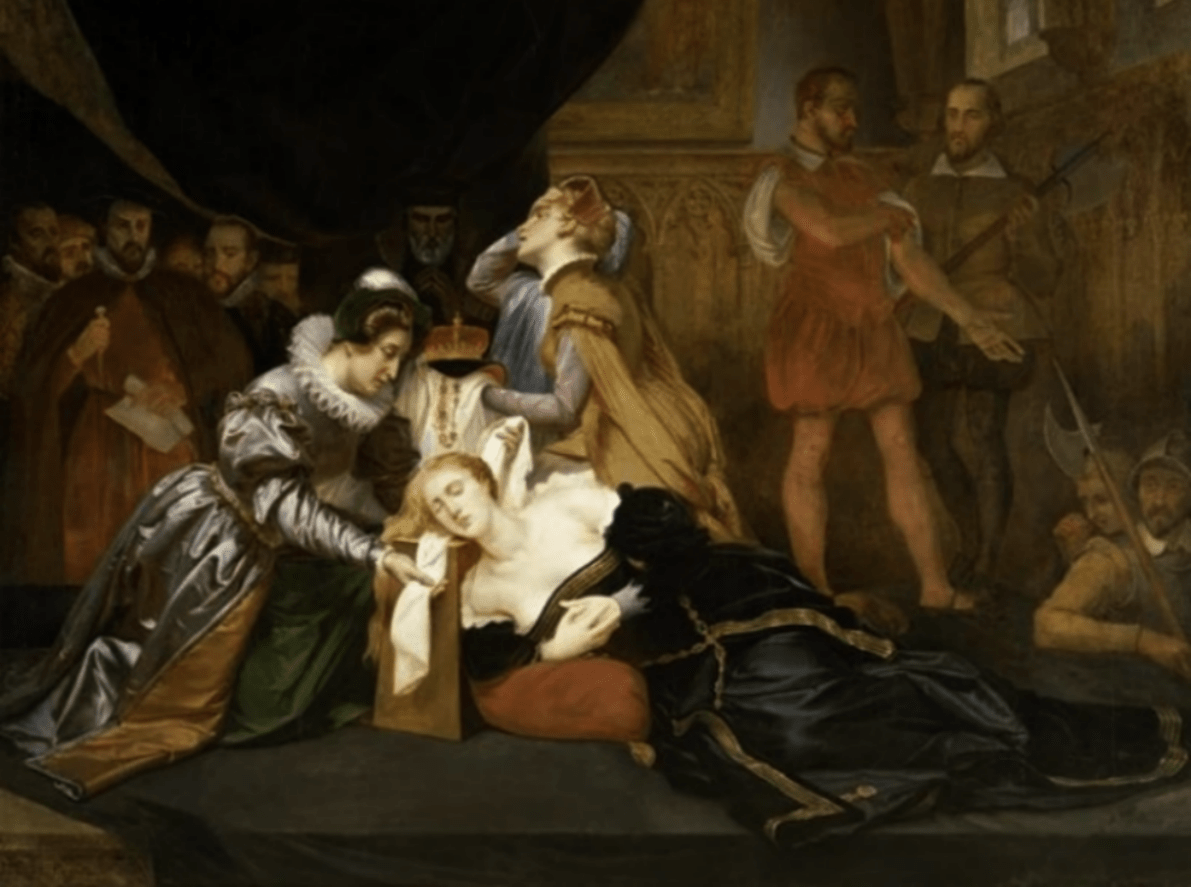
Mary, considerably younger than Elizabeth, was her only relative, and therefore the person who could inherit the English crown and achieve dynastic union with neighboring Scotland. However, many thought that Mary as a Catholic could be a good instrument to end Elizabeth's life and allow a return to official Catholicism. She compromised and discovered in more than one of those attempts she was discovered and entered jail. He confessed that not only Pope Pius V, who had excommunicated Isabel in 1570, was involved in his intrigues, but also the Spanish ambassador Bernardino de Mendoza, who was expelled from London in 1584. María would be sentenced to death on October 15, 1585 for conspiring against the life of the queen of England, and against the security of the Kingdom; but she waited for her until she was executed at Fotheringhay Castle in Scotland on February 8, 1587, before her 45th birthday. Her beheading would go down in history for her pathos, the executioner had to give up to three blows to separate her head, producing a sadistic spectacle for the Protestants while producing repulsion towards the hidden Catholics, who informed Philip I of the event. The second event would be Drake's Preemptive Strike where, with the authorization of the Queen, Francis Drake would set sail with four Royal Navy ships: the Elizabeth Bonaventure, the Golden Lyon, the Rainbow and the Dreadnought; Along with 20 other ships, merchant ships and armed pinnaces, they joined them on the expedition. However, the queen would retract her decision and seven days after departure, the queen would send Drake a counter-order in which she stated that no hostility should be carried out against the Spanish fleet or ports. . This letter never reached Drake's hands because the ship that was to deliver it, forced by contrary winds, had to return to port without being able to catch up with it.
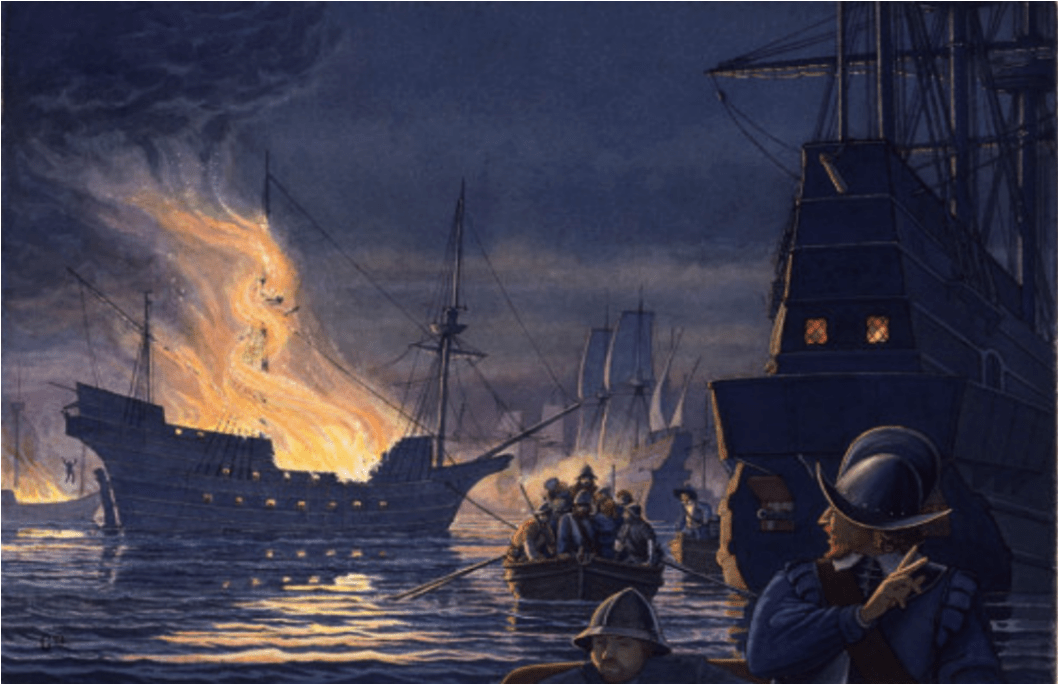
Off Galicia, the English fleet would be dispersed by a storm that lasted 7 days, during which one of the pinnaces sank. After regrouping the fleet, they would meet two Dutch ships from Middelburg, Zeeland, who reported that a large Spanish war fleet was being prepared in Cadiz ready to leave for Lisbon. At sunset on April 29, the English fleet entered the Bay of Cádiz. At that time there were 70 naos in the port, and several smaller boats. During the night of the 29th and all the following day and night, fighting continued in the bay of Lisbon. At dawn on May 1 the English withdrew, 18 Spanish ships were burned or sunk and 6 captured, including 4 ships full of provisions. After the attack, Francis Drake would undertake a pirate tactic where he directed his course along the southwestern coast of Spain and Portugal, destroying all the ships in his path, including fishing boats and fisheries, destroying thousands of tons of various barrels, he would even reach disembark 1,000 men in Lagos, in the Portuguese Algarve, assaulting the fortresses of Sagres, La Valiera, Beliche and Cabo de San Vicente. The looting route would take him to Lisbon where the Marquis of Santa Cruz Álvaro de Bazán was supervising the preparation of the fleet that was to join the Cadiz fleet for the invasion of England. The English fleet stopped in Cascais, from where they proposed an exchange of prisoners to Álvaro de Bazán, to which he responded by denying that he had any English subject in his possession or that he was preparing any action against England, a clear lie but returning the gesture of perfidy. pirate that Francis Drake was hiding. Both Drake and Bazán refused to engage in combat, limiting themselves to an exchange of artillery fire between the English fleet and the Spanish-Portuguese forces on land, which produced no casualties.
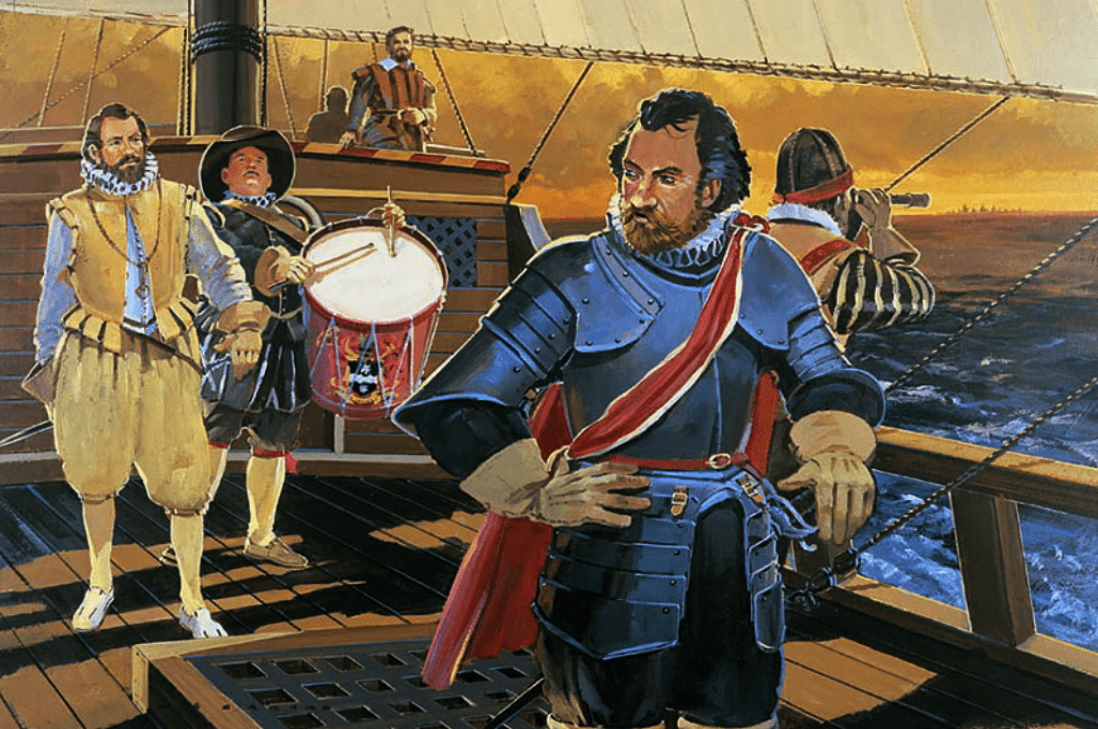
Due to the situation that was facing, Drake ordered to weigh anchor, marching again towards Sagres, where the English troop was supplied with water, maintaining some confrontations with the Spanish caravels that had gone in pursuit from Cádiz for later the wounded and sick English to be evacuated. towards England. Drake would end his attack campaign by attacking the Azores Islands where he would end up capturing the first ship captured on the way back from the Indies, the Portuguese carrack San Felipe, and the enormous fortune it carried in gold, spices and silk, estimated at 108,000 pounds (of which 10% went to Drake himself), the English fleet returned to England, where his return would be celebrated as that of the Conquering Hero, since the economic and material losses caused among the Spanish fleet by the English attack caused Spanish plans to invade England were to be postponed for more than a year. However, the real damage would be the documents looted by the English in the capture of the San Felipe, where the maritime traffic with the East Indies and the lucrative trade in the area were detailed, would serve years later as the basis for the foundation of the British East Indies Company. However, Drake's raid was not all glory, as the Dragon reported on the huge fleet that the Spanish were amassing. On December 21, 1587, the queen appointed Lord Charles Howard of Effinghan chief of the fleet, she preferred him to Drake more suitable for the command exercised by a character of high rank, Drake being appointed second in command. Drake advised Howard to assemble the fleet at Plymouth and leave a fleet of 23 ships under the command of Henry Seymur to guard the Channel and prevent the possible passage of French Catholic volunteers. On 3 June, 105 ships met in Plymouth harbour, of which 19 were Royal Navy and 46 large armed merchantmen. Drake would ask to repeat the previous year's raid, but the queen denied permission.
As for the land forces, the English had a small professional army, most of them were newly recruited militias, all the militias of the southern states were concentrated in London, together with the urban militias, in total 21,000 troops; a reserve of 17,500 militia and 4,000 regulars who had returned from the Netherlands was formed at Tilbury in Essex by the Earl of Leicester; 29,500 militia were stationed from Cornwall (Cornwall) to Kent along the Channel, in Kent alone there were 9,000. Another reserve of 8,000 militiamen was located further north. These forces were not rivals for the Tercios that would be led by the Duke of Parma, well trained, disciplined and with a lot of combat experience having been hardened in North Africa. Except for 4,000 who had returned from Holland to support the Protestants, they had no combat experience, the latter only in defending and attacking fortresses. At the end of June the English fleet was made up as follows: the Royal Navy with 34 ships and its flagship the 800-ton Ark Royal, the London squadron with 30 ships, the Drake squadron with 34, the Thomas Howard (merchant and coastal) with 38, 15 supply ships and 23 volunteer craft, and 23 from Seymour on Downs. It would finally be in August 1588 when the Great Armada was ready to leave for the British Isles. At the end of May, the king sent his last order, the clearest and most conclusive: "You will go to sea with all the men and ships, heading directly to that island of Pirates and Witches...". On May 30, at daybreak, the different squadrons of that impressive army left the port of Lisbon, under the command of Alvaro de Bazan, which included 19,000 infantrymen, 7,000 sailors, 1,000 knights of fortune, 180 clerics, 500 exiles English and Irish Catholics, and 124 ships.
A few days later, the difficulty of keeping together a fleet of ships with such diverse seafaring characteristics became evident; and, to aggravate the situation, a violent storm broke out off the Galician coast, forcing the Navy to take refuge in the La Coruña roadstead. It's been over a month to get the fleet back together. However, on Friday, July 22, the Spanish Navy set sail from La Coruña, with its 124 ships grouped into 10 squadrons, in good weather. On July 29, the fleet would arrive in Cornwall where the Tercios would land near Falmouth, Cornwall. The Spanish Tercios would land in England while the cannons of the Castles of Pendennis and Saint Mawes were silenced by the overwhelming Spanish artillery that in one case, would cause the destruction of one of the towers of Saint Mawes when an explosive cannonball would hit against a powder keg that would end up making it easier for the Tercios to gain access to the interior and put the garrison to the sword, who refused to surrender. The Fal Estuary was the perfect place for a non-English fleet to establish a foothold during an invasion of England as even the fjord-like waters of Carrick Roads are steep and deep, with depths of 12-14m in many places. , and can allow large ships to anchor safely in midstream. This motivated the construction of five artillery forts to protect it. But due to economic recession, Pendennis Castle and St Mawes Castle were built between 1540 and 1542. Logically, these castles in the following forty years were not designed to withstand an assault as brutal as the one it suffered. For the first time in centuries, England was invaded by an enemy who did not share the same religions. Protestant criers would compare the invasion to the invasion of the Vikings or the Romans by invoking figures like King Alfred the Great or Queen Boudicca.
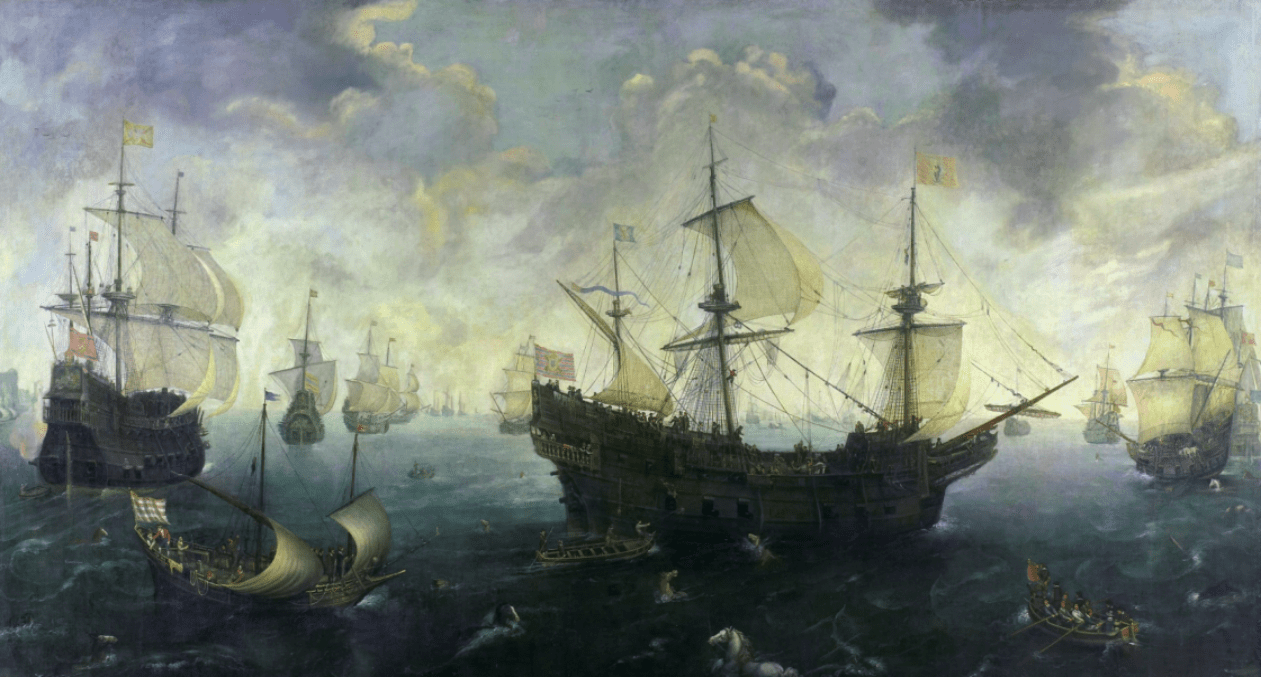
The news of the Spanish invasion ended up being transmitted immediately by the lighthouses located on the British coast and by the horse couriers that left Plymouth a little less than 55 miles from Falmouth. Plymouth was the home port of England's most successful seafaring merchants, including Sir John Hawkins and Sir Francis Drake. The news of the Spanish landing was received with surprise by Francis Drake who did not expect that they would dare to land in Cornwall, the situation in Plymouth was difficult because a council of war considered attacking the Spanish fleet and dealing them a heavy blow. Hawkins, familiar with those coasts, knew that the direction of the wind and tide at that time was favorable to the Spanish; however, Francis Drake called Hawkins a coward. After a heated discussion, Francis Drake would use his reputation to take command from Hawkins and attack the Spanish fleet while he was vulnerable. On the same afternoon of July 30, the English fleet, under cover of darkness, began to leave the port of Plymouth, leaving 90 ships. The fact that Drake's pirate spirit prevailed over discipline would benefit the Spanish, since the English fleet lacked proven leadership in a battle of such magnitude. On the morning of July 31, 1588, while the Spanish armada at Falmouth waited, the Spanish sighted a lineup of 91 English sails approaching. Seeing the immensity of almost a hundred and a half Spanish ships, prepared for war, caused the English ship captains to be unwilling to get too close to the Great Armada, limiting themselves to firing from a distance without getting too close to the enemy navy. In the midst of such cowardice, Drake would exclaim "we have hunted them but they are the ones hunting us." The English fleet was faster and more maneuverable but its artillery fire was imprecise. Sir Francis Drake would end up dying when a cannonball fired by the Almiranta nao of the Portuges squadron: the São Martinho (San Martín) would hit Francis Drake's ship: Revenge, which would suffer an explosion of gunpowder barrels that would cause the collapse of its decks, the sterncastle and the destruction of the ship, killing the entire crew.
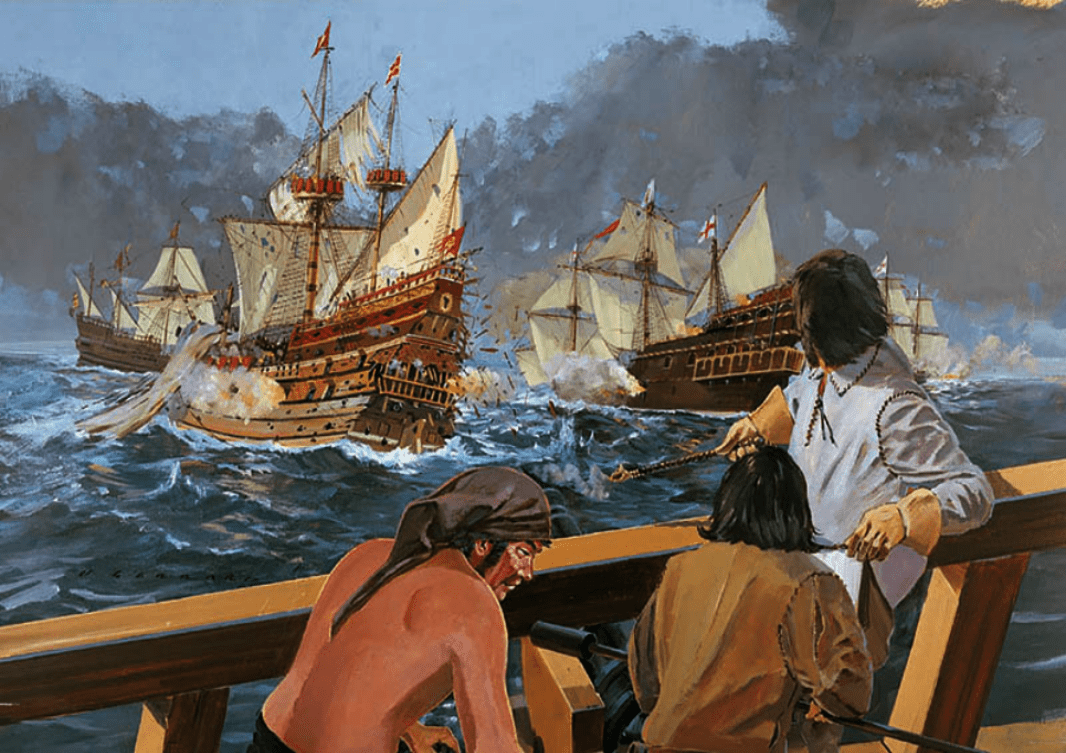
The cries of joy of the Portuguese would be heard with a simple message: "THIS FOR THE PILLAGE OF THE DRAGON". The English due to lost and damaged ships would be forced to retreat to Plymouth, demoralized, without gunpowder or cannonballs. However, as soon as they arrived they would see how the city was already being abandoned as the first Spanish scout horsemen had been sighted near Plymouth. Forced by this, they were forced to flee while the crews began to suffer from epidemics of typhus and dysentery that broke out aboard the English ships immediately after the confrontation with the Spanish fleet. Around 9,000 English sailors were victims and would end up dying and being thrown into the sea. The news brought by the Plymouth refugees ended up sparking Catholic riots and riots in major cities like Manchester, Liverpool, Bristol, London and even York. The riots closest to London and Protestant nuclei would end up being crushed with extreme brutality to the point that entire neighborhoods would burn when the English Catholics would respond to the arrival of Queen Elizabeth's soldiers accompanied by militiamen with a ferocity worthy of an animal that had been tortured, oppressed and kicked to the point where rage plagued their minds, Catholics would find themselves supported by their relatives even if they were Protestants and in some cases by their most faithful friends who would fight for loyalties and friendship more than for religion. However, entire neighborhoods would end up decorated with Protestant or Catholic corpses that in their last moments would be abused and mutilated or even in the case of women, mass raped, the anger of almost a century of repression was exploding so strong that even the arsenal Real on the south bank of the River Thames at Woolwich in southeast London, it was detonated by a group of Catholics who held it up at gunpoint and sword before exploding all the gunpowder stored inside.
Chaos spread as Queen Elizabeth sank into madness as a kingdom was engulfed in the fires of rebellion as an enemy marched in after razing Plymouth and massacring her population. The Tercios under the command of Alexander Farnese would be such a powerful enemy that it would be compared to the Roman Legions or Macedonian Phalanxes that would end up taking London six months later, sowing terror and fear while paving a road by burning any village, town, Protestant town or castle in the country. When Philip I found out how his men were destroying England, he would respond.
"Dear Alejandro. Kill all you find. Take no heretical prisoners. Burn their cities and villages to ashes. Make them suffer as we suffer under the Moors or with the Dragon's piracy. BRITANNIA DELENDA EST."
The letter that was read weeks later, by the Duke of Parma in the same Whitehall Palace where his troops had camped while they rested. No one knows what happened to Elizabeth I, some say she fled to Holland, others to France, Germany, Prussia, Sweden, Norway, even Iceland, while others would tell obscene versions of her death that include details about her last moments at the hands of lecherous soldiers. Spaniards although this would be true for impostor women who would try to boost morale but would quickly damage it when they would be shot down and defiled in public by English Catholics or Spaniards. This period would be known as La Anarquia or The Anarchy
Well that was a little rude.
But at least we have the chapter. To tell the truth the way things are going England will not recover for another decades.
But at least we have the chapter. To tell the truth the way things are going England will not recover for another decades.
It was a more, "Fuck off my method of delay" Not was specific for you or anybody. Is more a fuck off meWell that was a little rude.
Well that was a little rude.
But at least we have the chapter. To tell the truth the way things are going England will not recover for another decades.
I guess detail lost in translationIt was a more, "Fuck off my method of delay" Not was specific for you or anybody. Is more a fuck off me
It does come off rude in english but it probably sounded different in spanish
Basically in Spanish I make aI guess detail lost in translation
It does come off rude in english but it probably sounded different in spanish
"A la mierda. Hagámoslo"
Hold my beer, prepare to see Lope de Vega, Cervantes and Shakespeare drinking together.Also regarding the chapter
I guess everything Turtledove wrote in "Ruled Britannia" is a understatement compared to what went down here
The spanish pulled the Unspeakable Seamammal
God help us all!
Loving it
I think you meant something along the lines of "Screw it. Lets do it"Basically in Spanish I make a
"A la mierda. Hagámoslo
Glorious!Hold my beer, prepare to see Lope de Vega, Cervantes and Shakespeare drinking together.
I was thinking... The new ruler of Japan is Spanish-European, surely he will follow a policy of linking up with the locals, there will be a point where the viceroy himself has a Japanese appearance, it ironically reminded me of ad Astra per aspera, where it is explained as a nation it is ethnically Chinese, politically German, and something else. It would be a fun mix.
It also depends, how the Spanish empire develops. At the moment it is a vassal State rather than a Viceroyalty, but how long before it ends up becoming one?I was thinking... The new ruler of Japan is Spanish-European, surely he will follow a policy of linking up with the locals, there will be a point where the viceroy himself has a Japanese appearance, it ironically reminded me of ad Astra per aspera, where it is explained as a nation it is ethnically Chinese, politically German, and something else. It would be a fun mix.
As I see it for the 21st century it could be like Paraguay, only with its twists.
For some reason I tend to use Paraguay a lot when I make comparisons.
Loving this chapter.
the English repressing the Catholics and this described in all its crudeness is something unusual to see. This is generally ignored or given the Follett treatment (ie, in Follett, the Catholics are so stupidly evil that they deserve that and more).
Seeing him here is especially impressive when we see him contributing to England's downfall, as who would have guessed, people don't give a damn about the 'balance of power' when their promoters are doing their best to screw you over.
Especially in this case where it's obvious that there really is NO incentive to be loyal to a crazy monarch (Elizabeth) who has decided that you deserves to die anyway. Especially when it is seen that the "checks and balances" have been that the "controllers" are the main and biggest supporters and beneficiaries of the royal's excesses.
I saw the reference included in Isabel disappearing and various impostors appearing.
the English repressing the Catholics and this described in all its crudeness is something unusual to see. This is generally ignored or given the Follett treatment (ie, in Follett, the Catholics are so stupidly evil that they deserve that and more).
Seeing him here is especially impressive when we see him contributing to England's downfall, as who would have guessed, people don't give a damn about the 'balance of power' when their promoters are doing their best to screw you over.
Especially in this case where it's obvious that there really is NO incentive to be loyal to a crazy monarch (Elizabeth) who has decided that you deserves to die anyway. Especially when it is seen that the "checks and balances" have been that the "controllers" are the main and biggest supporters and beneficiaries of the royal's excesses.
I saw the reference included in Isabel disappearing and various impostors appearing.
I try to give a reason and background to why X thing. A friend told me that the English Catholics will defend England for patriotic reasons but... What happens when it is the same state that has been suffocating you and treating you like shit? That explodes somehowthe English repressing the Catholics and this described in all its crudeness is something unusual to see. This is generally ignored or given the Follett treatment (ie, in Follett, the Catholics are so stupidly evil that they deserve that and more).
We are talking about the 15th century, there is no geneva convention, nor a legality in war except for the unwritten rules of chivalry that only applied in case of overextending you go out of line, example: massacre a region regardless of gender, religion or ageSeeing him here is especially impressive when we see him contributing to England's downfall, as who would have guessed, people don't give a damn about the 'balance of power' when their promoters are doing their best to screw you over.
Look what happen with the sailors who fight in the royal navy against the Spanish Armada... Basically 10,000 sick with sífilis and other diseases and the Queen don't care and only worry when some people complaint. The Royal Navy don't have the same level of professionalism as Spanish IRL, if you search can find the name, type of vessel and captain of every ship who go to the campaign even the number or name of every people inside. Maybe sound as high defend of Spain but is the truth.Especially in this case where it's obvious that there really is NO incentive to be loyal to a crazy monarch (Elizabeth) who has decided that you deserves to die anyway. Especially when it is seen that the "checks and balances" have been that the "controllers" are the main and biggest supporters and beneficiaries of the royal's excesses.
I saw the reference included in Isabel disappearing and various impostors appearing.
China: Catay (Marco Polo's name), Asia/India/Tierra Dominga ("de Ming"), Asia/India/Tierra San Juan ("Zhongghuó")If anyone want give names for regions of the world... Have freedom for suggest.
Japan: Cipango (Marco Polo's name), Iapam (https://en.m.wikipedia.org/wiki/Nippo_Jisho)
New Zeeland: Islas Antípodas
Australia if discovered by a Cervantes's fan:
Nueva La Mancha (capital Villa Quijote)
Nueva La Mancha sound good for one side of Australia.China: Catay (Marco Polo's name), Asia/India/Tierra Dominga ("de Ming"), Asia/India/Tierra San Juan ("Zhongghuó")
Japan: Cipango (Marco Polo's name), Iapam (https://en.m.wikipedia.org/wiki/Nippo_Jisho)
New Zeeland: Islas Antípodas
Australia if discovered by a Cervantes's fan:
Nueva La Mancha (capital Villa Quijote)
La Anarquia Inglesa
«Somos los sabuesos de Santiago Matamoros. El moro ya conoce nuestra sed y hambre de sangre y por ello nos teme. Es hora de demostrarle al Hereje Ingles lo que es terror. ».
«We are the bloodhounds of Santiago Matamoros. The Moor already knows our thirst and hunger for blood and therefore he fears us. It's time to show the English Heretic what terror is.».
— Alejandro Farnesio, Duke of Parma.
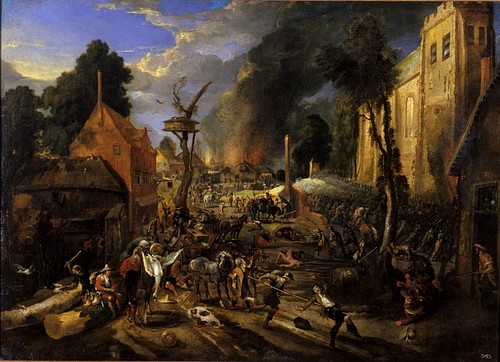
«We are the bloodhounds of Santiago Matamoros. The Moor already knows our thirst and hunger for blood and therefore he fears us. It's time to show the English Heretic what terror is.».
— Alejandro Farnesio, Duke of Parma.

The horror that was unleashed in England due to the piracy and defeat of the Fal Estuary along with the subsequent period known as The English Anarchy. This period would be marked by constant Spanish offensives where they would be supported by a network of self-fortified English Catholic communities, provided with weapons, fodder and food, which proved to be a difficult target for the Protestants who were waging a guerrilla war. The climate of instability contributed to the descending of entire clans of Border Reivers from the Scottish-English border who looted farms, palaces and even some small cities with impunity. Some Scottish clans decided to descend to the south to plunder England while entering the service of Alexander Farnese, as even the Border Reivers were recognized for their skills as light cavalry, the main of these Border Reivers would be Walter Scott of Harden, also known as Auld Wat, a notorious Border Reiver along the Anglo-Scottish border. Spanish soldiers grew rich by looting Protestant property such as castles, palaces, churches, abbeys, towns and villages as well as thousands of works of art, books and valuables. However, the religious situation would make the Farnese troops advance towards Scotland ruled by King James VI of Scotland, the son of Mary Stuart. King James had a dilemma because although the monarch had been baptized Catholic, according to the dictates of the ruling class he was educated in the strictest Calvinist discipline, and became a member of the Church of Scotland. He had been educated by the historian and poet George Buchanan, a man equipped with the science and erudition to educate a prince, but, at the same time, a harsh and intolerant character, a weary and tense republican, full of avid virtues, who he hated his disciple's family and, more than likely, his own disciple, which caused him to subject him to regular beatings.

James VI of Scotland assured Elizabeth of his support as her "son and compatriot", so that when the Spanish troops landed in England and totally destroyed the cornerstone of the English defense that were the Organized Militias who practically threw down their weapons and fled prey of panic. Their concerns were raised sharply, apart from the fact that thousands of English Protestants fled to Scotland, causing the Tercios to begin marching North. The arrival of the Spanish troops who were described as Legions of papists fighting for Rome and its Spanish King with such fervor that it would take a cannonball to bring them down sent James into terror. Groups of Protestant Calvinist Borders Reivers tried to oppose the Spanish advance who quickly made an example by feeding the wild beasts of Scotland with their carcasses hanging from branches. But when Alexander Farnese arrived at the walls of Edinburgh, the Scottish King's envoys respectfully reported that the King was practically frightened by the Spanish troops and that he would only speak to Alexander Farnese and the lieutenants in command of each Tercio. The meeting at Edinburgh Castle would go down in history as the beginning of the Jacobite Era, where in exchange for the imposition of Catholicism and the freedom of Ireland, the House of Stuart would ascend to the Throne of England and Scotland even when Henry VIII in his will, excluded James's great-grandmother, Margaret Tudor, and her descendants from the line of succession to the throne of England. But James was still the closest relative of Elizabeth I, and therefore the heir presumptive to the English crown. James's coronation came with a forced conversion of thousands of English from Protestantism to Catholicism in addition to the presence of Spanish troops that served as a counterweight against any Protestant uprising.
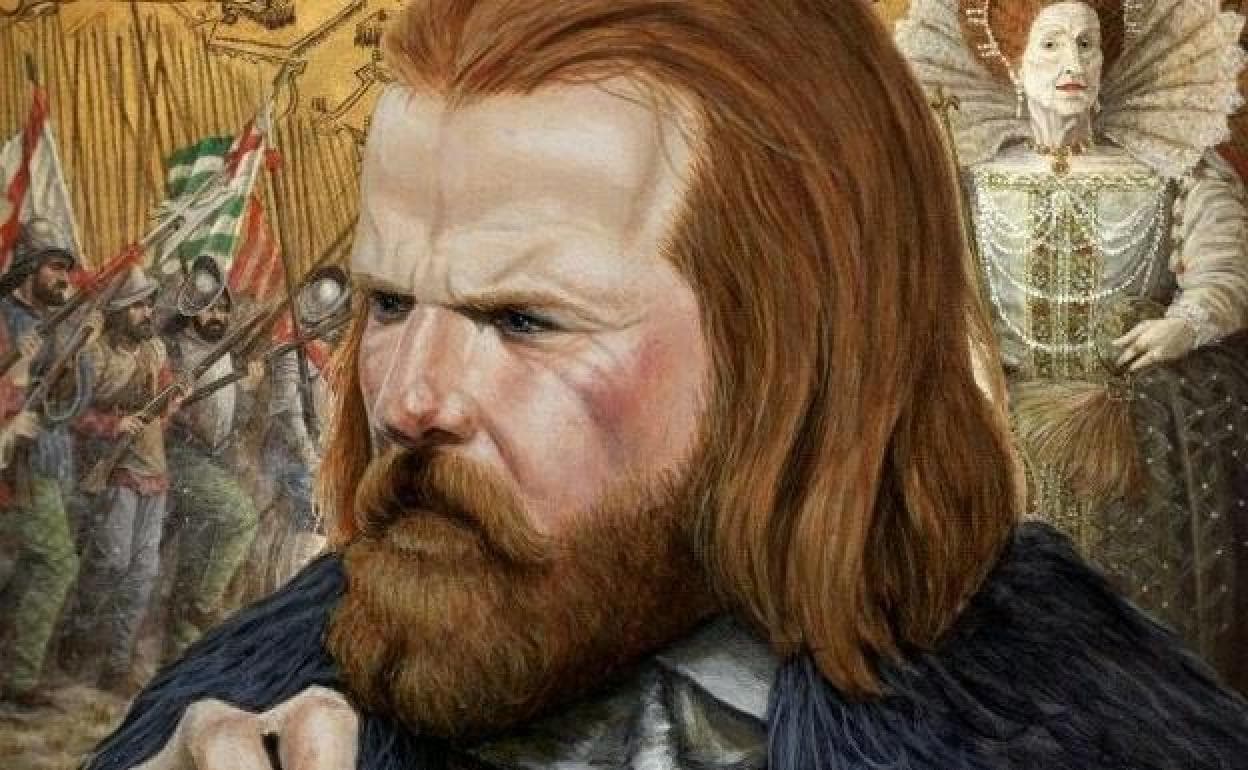
Ireland, on the other hand, saw the Spanish invasion of England as an opportunity to fight against remnants of English supporters of the Tudors as well as Protestant influence. But for this they had to face the Lord Deputy of Ireland who served as viceroy in practice of Ireland, the Lord Deputy was Sir William FitzWilliam a man who was famous for having supervised the execution of the death sentence of Mary, Queen of Scots. FitzWilliam's mandate as Lord Deputy could be said to be belligerent, since the situation on the other side of the strait made him show even greater brutality than expected against the Catholics who were beginning to show signs of rebellion led by Sir Hugh O'Donnell, the O'Donnell of his clan, and King of Tyrconnell. The rebellion would break out shortly after news of the Burning of London reached Ireland and Hugh O'Donnell began a militarization that nearly depleted his coffers: He recruited veteran Scottish Catholic mercenaries known as Redshanks, then large contingents of Irish mercenaries (known as buanadha ) under leaders like Richard Tyrrell (who served for a time in the Spanish Tercios and made him well known), also conscripted his tenants and dependents into military service and tied the peasantry to the land to increase food production. All this was done at the same time that he bought muskets, ammunition and pikes from Scotland and Spain to arm his soldiers. With these preparations, O'Donnell was able to arm and feed more than 10,000 men, unprecedented for a Gaelic lord, and leaving him well prepared to endure the war which would begin in Winter, coinciding to be able to do more damage on English land than on Irish land. . The so-called Confederation of Irish Lords launched the war through an offensive that practically took Cork with the support of a Spanish galleon that blocked the port and offered artillery fire while English Ulster would end up being taken in a matter of days.
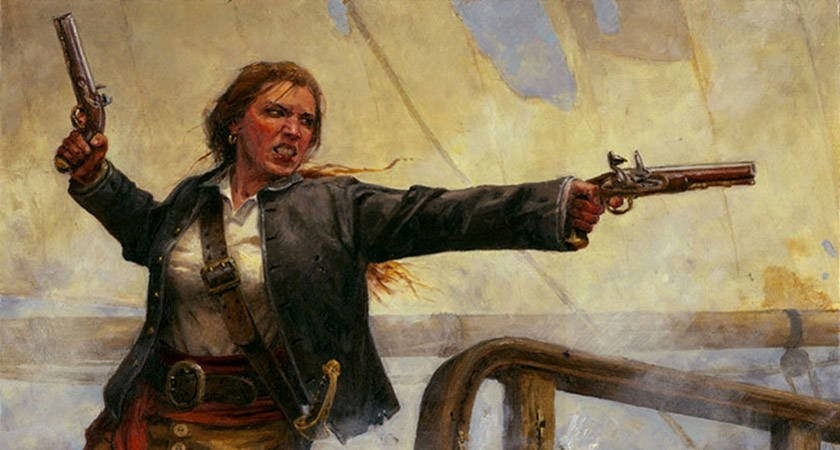
The Irish Rebellion saw the Irish plow through Royal Irish Army troops. One town packed with English settlers after another burned. The Irish advance consisted of an advance against Ormond and Kildare while Protestant English settler populations fled from the advancing Gaelic Catholic advancing into the sound of the Great Irish Warpipes. The Irish forces barely paused in their warlike advance almost carried away in that primal fury that English scholars and connoisseurs of Irish tales would say seemed possessed by Cuhullin's vengeful spirit. The rivers of The Pale would be inundated with the corpses of stragglers to such an extent that the ravens would end up fat and the Pale would be called the "Bloody and Burnt Pale". William FitzWilliam would lead the defense of Dublin until finally a musket ball felled him. But the surprise would be when from the mists of the Irish Sea emerged a mixed flotilla of Spanish and Irish ships led by the head of the Ó Máille dynasty: Grace O'Malley. The situation caused the English troops with their Irish sympathizers to end up surrendering just to get permission to leave Ireland while the Irish sympathizers would end up being lynched or hanged for treason against Ireland. The liberation of Ireland was achieved at the cost of thousands of deaths but it was a price that the Irish seemed willing to pay, but Alexander Farnese decided, although he rather demanded, that a King be elected to govern and represent Ireland. By 1590, the Kingdom of Ireland was ruled by Hugh O'Donnell since his initiative achieved the independence of the island. Hugh managed to turn Ireland into a nation that abandoned subsistence farming and even built fishing fleets (which would be used sometimes to pillage and plunder Wales and England.). While Grace O'Malley would become the promoter of the creation of the Irish Navy.

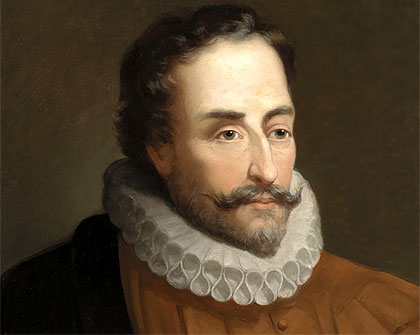

The arrival of King James and his court, who would be called Jacobites, in England was accompanied by companies of Spanish soldiers charged with suppressing any uprising. As James moved south, his new subjects flocked to see his king, making it clear that the succession had not provoked discontent or was perceived as an invasion compared to the Spanish. When he entered London, James was greeted by a crowd, but his new subjects did not like him, who saw that he was accompanied by the same soldiers who had set fire to the capital some time before. He and his new wife Anne of Denmark, the 13-year-old daughter of Frederick II of Denmark, were crowned King of England. The coronation of Jacobo and Ana was a romantic episode throughout their marriage, because at first Jacobo had been fascinated with Ana, and from the beginning of the marriage he showed constant patience and affection towards her wife. The ascent to the throne of James, was the seed of what would be known as Absolutism: the doctrine of the divine right of kings, something that would be a new ideological basis for European monarchies. James began his reign, restoring cities and towns, even rebuilding castles, although many would end up being more palaces than military fortifications. His reign continued the Elizabethan drama and literature, with great writers such as William Shakespeare, John Donne, Ben Jonson or Francis Bacon, whom the king sponsored, contributing to cultural flourishing although at first he was censored to avoid problems with the Spanish. William Shakespeare would end up making a name for himself as a playwright, poet, and actor to the point that he would become associated with the catholic writer and poet, as well as a womanizer and war veteran Lope de Vega, the novelist, poet, playwright, and Maltese veteran Miguel de Cervantes, also known as the "one-handed" Maltese. All catholics.

The Spanish Invasion and the subsequent rise of James on the other hand, caused groups of Protestant radicals to arise who advocated expelling James from the throne or eliminating the Spanish papist influence. While English religion and nationalism was used as propaganda, groups like the West Country Men who were in favor of the expansion and colonization of lands used the pretext of "following in the footsteps of the ancestors" as did the Germanic barbarians who helped destroy Rome for later invade Roman Britannia, the Vikings who settled in the north around York and later the Normans who led by William the Conqueror. Walter Raleigh issued these thoughts in impassioned speeches and diatribes that were to have an established base for the so-called Virginia Company, a trading company destined to colonize a swath of land in America. Ironically, Walter would use the Spanish as an example of what happens when a race decides to advocate the path of the Conquering Sword, explaining how the Spanish conquered part of the New World while England was still struggling to conquer and colonize Ireland. Sir Walter Raleigh would indirectly give rise to the phrase "England must end from being England and begin to be an Empire ruling the British Isles." England's economy was still decrepit from the total catastrophe of the Spanish Invasion even ten years later, and the people were desperate. Meanwhile, religious tensions that had been simmering for years since the Protestant Reformation and subsequent Spanish invasion escalated into almost open religious warfare, with Catholics lashing out at Protestants in riots and lynchings, and Protestants fighting back with riots of their own. as well as terrorist attacks. The worst was when a larger number of English Catholics turned to the Spanish forces for help.


After Robert Catesby and Guy Fawkes, recusant English Catholics who served in the Tercios, incited York's Catholic population to turn their guns on the city's Protestants, panic spread across the north of England. Arsenals and gunsmiths in the region ran out of armor, gunpowder and weapons in a matter of days. King James found it necessary to call in around 20,000 men organized into part-time militia companies to put down the riots in York and the north of England. Still, it didn't help that James was deeply unpopular. He had come to power through luck, and was seen as a Spanish puppet by the population. Within London proper, the English Parliament scoffed at his cowardly and suspicious ways, while the lords and military secretly thought he was a sodomite and ungraceful, largely due to his dislike of women and his lack of hygiene. where even the monarch indulged cynically in their sloppiness. However, the respect that the nation had for the figure of the King prevented a coup or rebellion. While this was happening, Spain began secretly giving arms, ammunition, and cash to the more radical Catholics, and began ordering them to attack the Protestant aristocracy. Across the nation, Catholics brutally harassed Protestants, even killing entire families or leaving only women alive but marked with cuts on their faces. However, despite Jacobo's attempts to stop these riots, massacres, and harassment campaigns, many newspapers were still able to spread knowledge of the violent acts of Catholics throughout the country. This inflamed the general public and hardened the fanaticism of the Protestants. The Protestants began to fight back and fight back in force, attacking the Catholic strongholds and killing the Magistrates who had turned a blind eye to the violence.
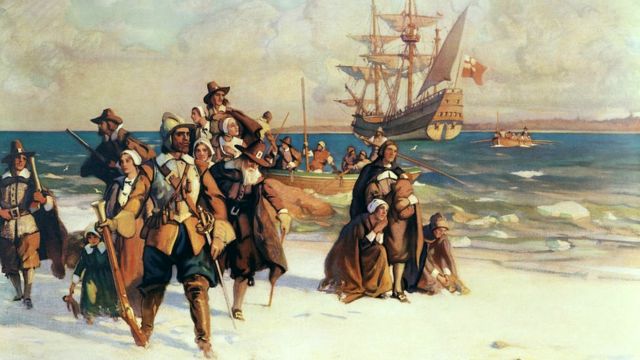
As the fighting spread from the cities to the countryside, the nobles of London spread out trying to contain the constant violence. For years, England would be an island consumed in fire just as France was. Reaching the end of in 1605, stopping a Protestant plot to kill the King that ended when the terrorists escaped to the Netherlands. The war itself never touched the capital and large cities, limiting itself to something comparable to skirmishes and a border war similar to that between the Scottish and English Border Reivers or the Iberian and Moorish Algaradas, this was due to the danger that the King take part, while the Catholics had the best weapons that money could buy, from swords and pikes to muskets and cannons. The Protestants had older weapons, but they made up for it by having 5 times as many people on their side. Years would pass until a new war broke out in England for a new monarch. While this was going on, religious persecution did wonders for Walter Raleigh as he allowed him to manpower to propel the first permanent English colony on overseas soil: Fort James. Although the colony was not built on an already existing civilization as it would be something comparable to the Aztecs, Mayans or Incas or would have a mineral resource such as gold, silver or diamonds as happened with Cuba, Hispaniola and later Mexico and Peru, it was a good generator of money based on the fur and tobacco trade that caused English pride after the brutal defeat and situation in the metropolis. Later, groups of religious refugees such as Puritans, Calvinists and others would end up fleeing to America, founding new colonies such as Plymouth, Boston, Albany, among others. This at the same time, would serve as future bases for the pirates who would end up attacking the colonial cities of Spain, which would motivate a greater Spanish militarization in the New World.
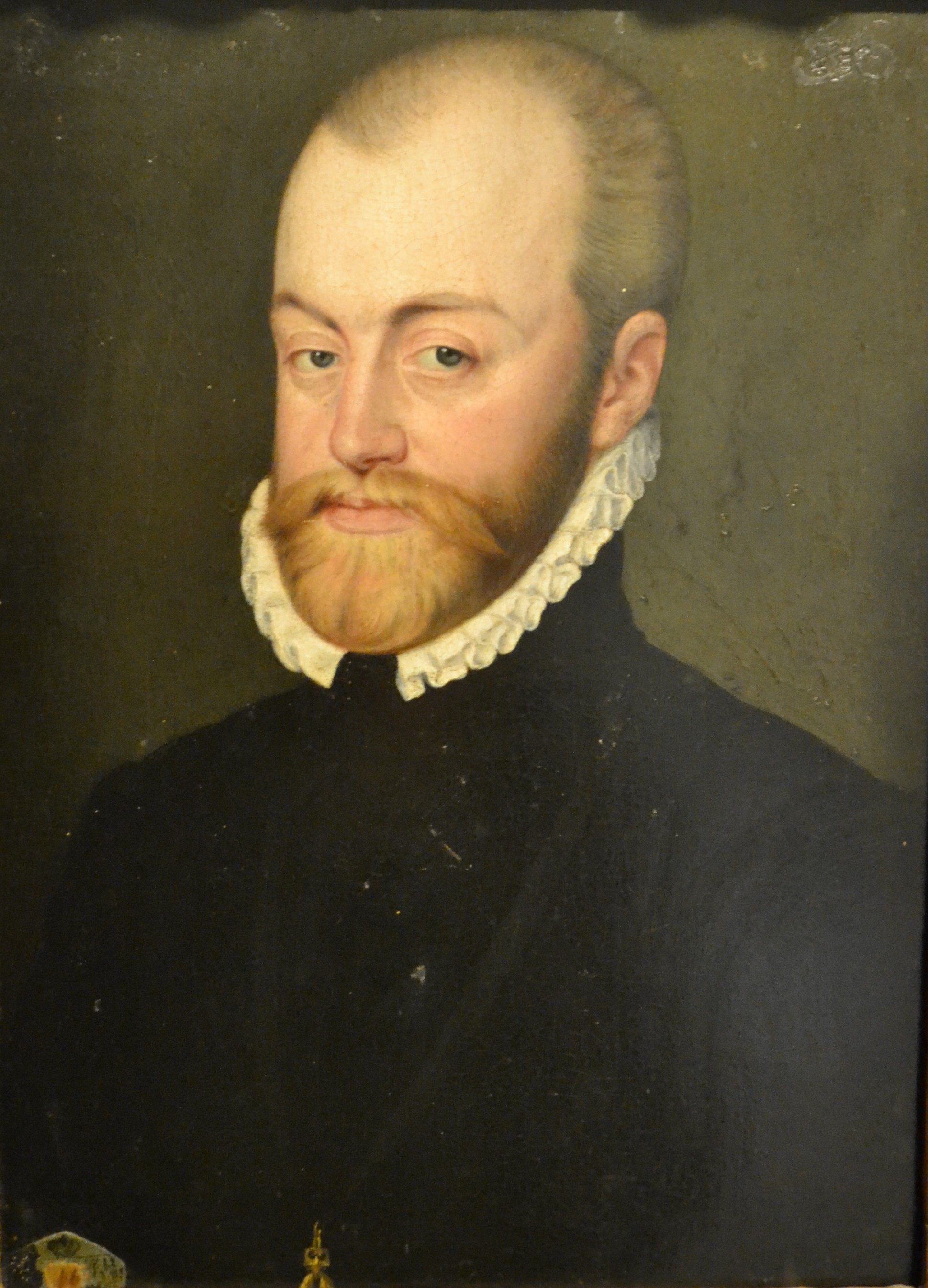
The Netherlands would also participate in the Conquest of America, reaching the point of founding a new city called New Amsterdam that would control one of the largest cities on the east coast of North America. But perhaps, it is this greater colonial expansion, which would make King Felipe I of Spain in the last years of his life, end up reviving an almost forgotten title. Felipe I of Spain would declare himself Emperor of Spain, a title that had been adopted since the 10th century by the Leonese monarchs, as an expression of a unitary Hispanic idea that implied the political supremacy of León against the other peninsular kingdoms that were being formed. In this case, the theoretical political supremacy of the title was aimed at the unity of the Kingdom of Spain as a single empire formed by several kingdoms annexed either by politics: such as marriage and diplomacy, or force based on conquest and subjugation. At the same time, Felipe had the support of an ancestral title that came from his great-grandfather: Fernando el Catolico, since the last Palaiologos pretender to the Crown of the Byzantine Empire, Andrés Palaiologos, sold his rights and titles to Fernando II of Aragon and Isabella I of Castile before his death in 1502. Although this brought some complaints to some dignitaries, it also implied more right for the Kingdom of Spain to be called the Spanish Empire, while Kingdom referred to European territories. However, in the territories of the Viceroyalty of Japan, a new phrase would become popular: Tennō heika Banzai which in Spanish meant approximately in meaning "May the Majesty of him the Emperor live ten thousand years"
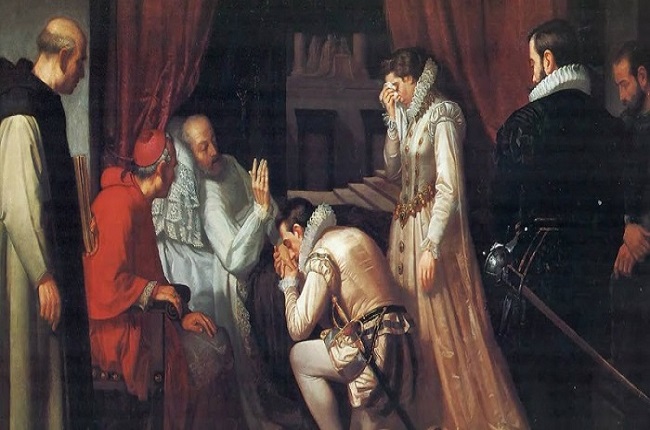
At five o'clock in the morning on Sunday, September 13, 1598, in the monastery of El Escorial, the monarch of the Spanish Empire died with a crucifix in one hand and a lighted candle in the other and his eyes fixed on the tabernacle: Felipe I from Spain. King Philip was, for most of his life, in poor health. He suffered from numerous illnesses and during the last ten years of his life he was prostrated by gout. He would lose the mobility of his right hand, making it impossible for him to sign documents, making use of an assistant who learned to copy his signature. In the late spring of 1598 he had himself transferred from Toledo to El Escorial where his father died. He took communion for the last time on September 8, since the doctors forbade him from that moment, for fear of choking when swallowing the host. At his own request he was installed in a small room from whose bed and through a small opening he could see the main altar of the basilica and the tabernacle that rested on it. Despite his immense suffering, he carefully arranged the smallest details of his funeral to the point that he had his children called, to whom he was weak in his bed. «I have wanted, my children, that you were present so that you can see what the kingdoms and lordships of this great Empire that are the Spains end up with.». King Felipe suffered a long agony that lasted fifty-three days, in which he suffered from various diseases: gout, osteoarthritis, tertian fevers, abscesses and dropsy among others. Under Philip I, Spain reached the peak of its power. Yet, despite the vast and growing amounts of gold and silver flowing into his coffers from overseas mines, the riches of the Portuguese spice trade, and enthusiastic support for the Counter-Reformation, he never succeeded in suppressing Protestantism or defeating the elimination of Protestantism threat from Protestant England permanently. Philip was a devout Catholic and exhibited typical 16th-century disdain for religious heterodoxy.
As he strove to enforce Catholic orthodoxy through an escalation of the Inquisition that turned Spain into something akin to an Ur-Police State. The religious absolute government would go so far as to imprison highly respected churchmen such as archbishops for almost two decades for publishing ideas that seemed somewhat sympathetic to Protestantism. Such strict application of orthodox belief was successful, and Spain avoided the religiously inspired strife that was tearing apart other European dominions. Felipe I was the most powerful European monarch in a time of war and religious conflict. Even before his death in 1598, his supporters had begun to present him as an archetypal knight, full of piety and Christian virtues, while his enemies portrayed him as a fanatical and despotic monster, responsible for inhuman cruelties and cruelties. barbarism. This dichotomy was helped by King Philip himself. Philip forbade any biographical account of his life to be published while he was alive, and ordered that all his private correspondence be burned shortly before he died. In addition, the execution of his ambitious secretary Antonio Pérez and his family, who published incredible calumnies against his former teacher, led to a prejudiced view of Philip by Protestants and enemies of Spain. Even in the countries that remained Catholic, notably France and Austria, fear and envy of Spanish success and domination created a wide receptivity to the worst possible descriptions of Philip I. Most pernicious of all was Philip's tendency toward messianic thinking, a belief that he was doing God's work and that heaven would support him with miracles. He as he secured the Portuguese kingdom and empire. He managed to increase the importation of silver against the English, Dutch and French corsairs, while he ended up consolidating the overseas empire of Spain.
after the Spanish empire was restored, it seems like they wanted to restore something bigger.

Share: